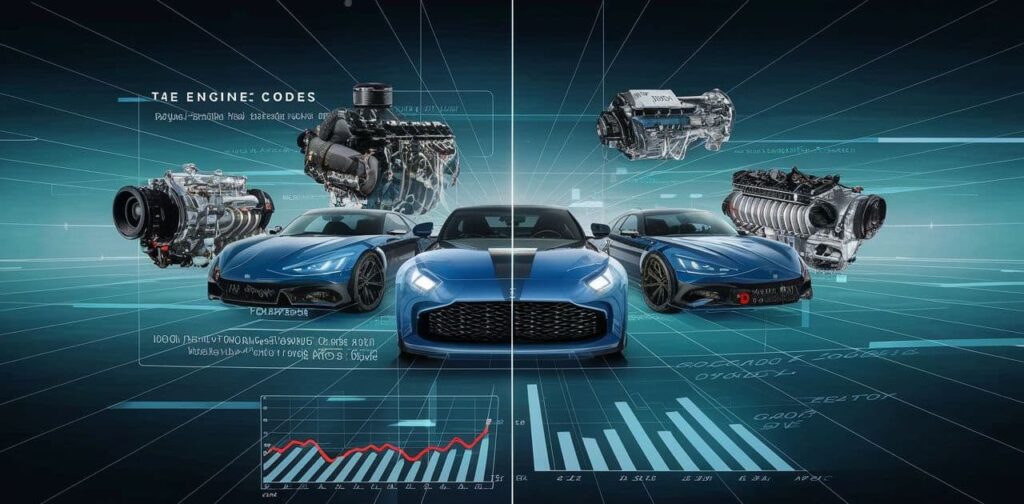In the realm of automotive engineering, certain codes hold the keys to unlocking intricate mysteries. Among these enigmatic codes lie $7E8, $7E9, and $7Ex, a trio of alphanumeric entities that have perplexed mechanics and enthusiasts alike. These codes, etched into the fabric of modern engines, conceal a wealth of information, from performance metrics to diagnostic data, making their decipherment a necessity for anyone seeking to optimize their vehicle’s capabilities.
Imagine possessing the ability to peer into the very heart of your engine, decoding its language, and harnessing its full potential. By unraveling the secrets of these codes, you gain unprecedented access to a treasure trove of insights, enabling you to fine-tune your vehicle’s performance, enhance efficiency, and ensure longevity. Prepare to embark on a journey that will transform your understanding of these intricate codes and empower you to conquer any automotive challenge.
This comprehensive guide delves deep into the realms of Engine Codes $7E8, $7E9, and $7Ex, offering a detailed exploration of their origins, functions, and practical applications. Tailored for both automotive enthusiasts and professionals, this article aims to demystify these codes, providing a clear and concise roadmap to unlocking their true potential. Brace yourself for a captivating adventure as you navigate through the intricacies of these codes, uncovering their impact on various engine systems and learning how to interpret their language for optimal performance.
The Origins of Engine Codes $7E8, $7E9, and $7Ex

To truly comprehend the significance of these codes, one must delve into their historical roots. Developed by leading automotive manufacturers, these alphanumeric sequences emerged as a means of streamlining communication between engineers and mechanics. As the complexity of modern engines grew, the need for a standardized language became paramount, paving the way for the creation of these codes.
Each code, meticulously crafted, carries a specific set of information tailored to different aspects of engine performance. $7E8, for instance, governs the intricate realm of fuel injection, ensuring precise calibration and optimal combustion efficiency. $7E9, on the other hand, holds the keys to unlocking the mysteries of ignition timing, a critical factor in maximizing power output and minimizing emissions.
Deciphering the Code: Understanding $7E8
At the heart of every modern engine lies a sophisticated fuel injection system, responsible for delivering the precise air-fuel mixture required for optimal combustion. Engine Code $7E8 is the gatekeeper to this intricate process, encoding a wealth of information that can be leveraged to fine-tune fuel delivery, ensuring peak performance and efficiency.
By decoding $7E8, mechanics and enthusiasts gain access to a trove of data, including fuel pressure, injector pulse width, and air-fuel ratio. Armed with this knowledge, they can make informed adjustments, optimizing the fuel injection parameters to suit specific driving conditions or performance goals. Whether seeking to maximize fuel economy or unleash the full potential of your engine, mastering $7E8 is a crucial step in the journey toward automotive excellence
Fuel Injection Parameters Governed by $7E8
| Parameter | Description |
| Fuel Pressure | Regulates the pressure at which fuel is delivered to the injectors. |
| Injector Pulse Width | Controls the duration of fuel injection for precise air-fuel ratio management. |
| Air-Fuel Ratio | Monitors and adjusts the mixture of air and fuel for optimal combustion. |
| Fuel Trim | Fine-tunes the fuel delivery based on operating conditions and sensor inputs |
Unlocking the Secrets of $7E9: Ignition Timing Demystified
In the intricate dance of combustion, timing is everything. Engine Code $7E9 holds the keys to unlocking the mysteries of ignition timing, a critical factor that determines the precise moment when the air-fuel mixture ignites within the cylinders. Mastering this code empowers you to fine-tune the ignition timing, ensuring optimal power delivery and minimizing harmful emissions.
By deciphering $7E9, you gain access to a wealth of data, including spark advance, cylinder identification, and knock detection. With this knowledge, you can calibrate the ignition timing to perfection, maximizing engine performance while safeguarding against damaging engine knocking. Whether you’re seeking to unleash the full potential of a high-performance engine or simply optimize your daily driver, unlocking the secrets of $7E9 is an essential step in the pursuit of automotive excellence.
Ignition Timing Parameters Governed by $7E9
| Parameter | Description |
| Spark Advance | Determines the precise timing of the spark for optimal combustion. |
| Cylinder Identification | Identifies the specific cylinder for accurate timing adjustments. |
| Knock Detection | Monitors engine knocking and adjusts timing to prevent damage. |
| Ignition Coil Control | Manages the operation of the ignition coils for consistent spark delivery. |
Practical Applications: Leveraging Engine Codes for Optimal Performance

The true power of Engine Codes $7E8, $7E9, and $7Ex lies in their practical applications. Armed with the knowledge gleaned from decoding these codes, mechanics and enthusiasts can embark on a journey of optimization, tailoring their vehicles to meet specific performance goals or driving conditions.
For those seeking a competitive edge on the racetrack, mastering these codes enables precise tuning of fuel delivery and ignition timing, unlocking the full potential of high-performance engines. Conversely, for those prioritizing fuel efficiency and eco-friendliness, these codes offer the opportunity to fine-tune their vehicles for optimal combustion and reduced emissions.
Diagnostic Capabilities: Troubleshooting with Engine Codes
Beyond performance optimization, Engine Codes $7E8, $7E9, and $7Ex serve as invaluable diagnostic tools, empowering mechanics to identify and address potential issues proactively. By monitoring and interpreting the data encoded within these codes, technicians can pinpoint anomalies, diagnose problems, and implement targeted solutions before minor issues escalate into major repairs.
Furthermore, these codes provide a window into the overall health and condition of the engine, allowing for predictive maintenance and proactive component replacements. By staying ahead of potential failures, mechanics can ensure their clients’ vehicles operate at peak efficiency while minimizing downtime and costly repairs.
Performance Optimization
- Fuel economy tuning
- High-performance engine calibration
- Emissions reduction
- Torque and horsepower maximization
Diagnostic Capabilities
- Fuel system fault detection
- Ignition system troubleshooting
- Misfire identification
- Predictive maintenance
Embracing the Future: The Evolution of Engine Codes
As the automotive industry continues to push boundaries, the role of Engine Codes $7E8, $7E9, and $7Ex will only become more pivotal. With the advent of advanced engine technologies, such as hybrid and electric powertrains, these codes will evolve to encompass new parameters and functionalities, ensuring seamless integration and optimization of these cutting-edge systems.
Moreover, the integration of artificial intelligence and machine learning into automotive diagnostics and tuning will revolutionize the way these codes are interpreted and leveraged. Predictive algorithms and real-time data analysis will enable mechanics to make informed decisions with unprecedented accuracy, further enhancing the performance and reliability of modern vehicles.
FAQs
What are Engine Codes $7E8, $7E9, and $7Ex?
Engine Codes $7E8, $7E9, and $7Ex are alphanumeric codes used in modern automotive engines to encode critical information and data related to fuel injection, ignition timing, and other engine parameters. These codes play a vital role in optimizing engine performance, diagnosing issues, and enabling precise tuning and calibration.
Why are these codes important?
These codes are essential because they provide a standardized language for communicating and interpreting engine data. By decoding and understanding these codes, mechanics and enthusiasts can gain valuable insights into the inner workings of the engine, allowing them to fine-tune various parameters for optimal performance, fuel efficiency, and emissions reduction.
How can these codes be used for performance optimization?
Engine Codes $7E8, $7E9, and $7Ex can be leveraged for performance optimization in several ways. By decoding $7E8, mechanics can adjust fuel injection parameters such as fuel pressure, injector pulse width, and air-fuel ratio to maximize power output or improve fuel economy. Similarly, deciphering $7E9 allows for precise ignition timing adjustments, ensuring optimal combustion and preventing engine knocking.
What are the diagnostic capabilities of these codes?
These codes serve as invaluable diagnostic tools, enabling mechanics to identify and troubleshoot potential issues proactively. By monitoring and interpreting the data encoded within these codes, technicians can pinpoint anomalies, diagnose problems, and implement targeted solutions before minor issues escalate into major repairs. Additionally, these codes provide insights into the overall health and condition of the engine, facilitating predictive maintenance and proactive component replacements.
Conclusion
As we delve deeper into the realms of automotive engineering, the significance of Engine Codes $7E8, $7E9, and $7Ex becomes increasingly apparent. These codes, once shrouded in mystery, have emerged as powerful tools for unlocking the true potential of modern engines. By mastering their decipherment, mechanics and enthusiasts alike can gain unprecedented control over critical parameters, fine-tuning fuel injection, optimizing ignition timing, and maximizing overall engine performance.
However, the journey does not end here. As technology continues to evolve, these codes will undoubtedly adapt and expand, encapsulating new parameters and functionalities to accommodate the ever-advancing automotive landscape. Embracing this evolution and staying ahead of the curve will be paramount for those seeking to maintain their edge in the world of engine performance and diagnostics. With a comprehensive understanding of these codes and a willingness to embrace innovation, the automotive community can look forward to a future where peak efficiency and unparalleled performance are within reach.

Alexander Quinn is the author behind Filterabout.com. Known for expertise in diverse topics, Quinn’s content on the website reflects a versatile knowledge base catering to various interests.



![Jynxzi Age, Net Worth, Career[2024]](https://filterabout.com/wp-content/uploads/2024/05/Who-Is-Shanin-Blake-Age-Wiki-Parents-Dating-Net-Worth-300x148.jpg)
![Jynxzi Age, Net Worth, Career[2024]](https://filterabout.com/wp-content/uploads/2024/05/Jynxzi-Age-Net-Worth-Career2024-300x148.jpg)


![Kutty Surumi Net Worth, Bio, Age[2024]](https://filterabout.com/wp-content/uploads/2024/05/Kutty-Surumi-Net-Worth-Bio-Age2024-300x148.jpg)



![Jynxzi Age, Net Worth, Career[2024]](https://filterabout.com/wp-content/uploads/2024/05/Who-Is-Shanin-Blake-Age-Wiki-Parents-Dating-Net-Worth-150x150.jpg)